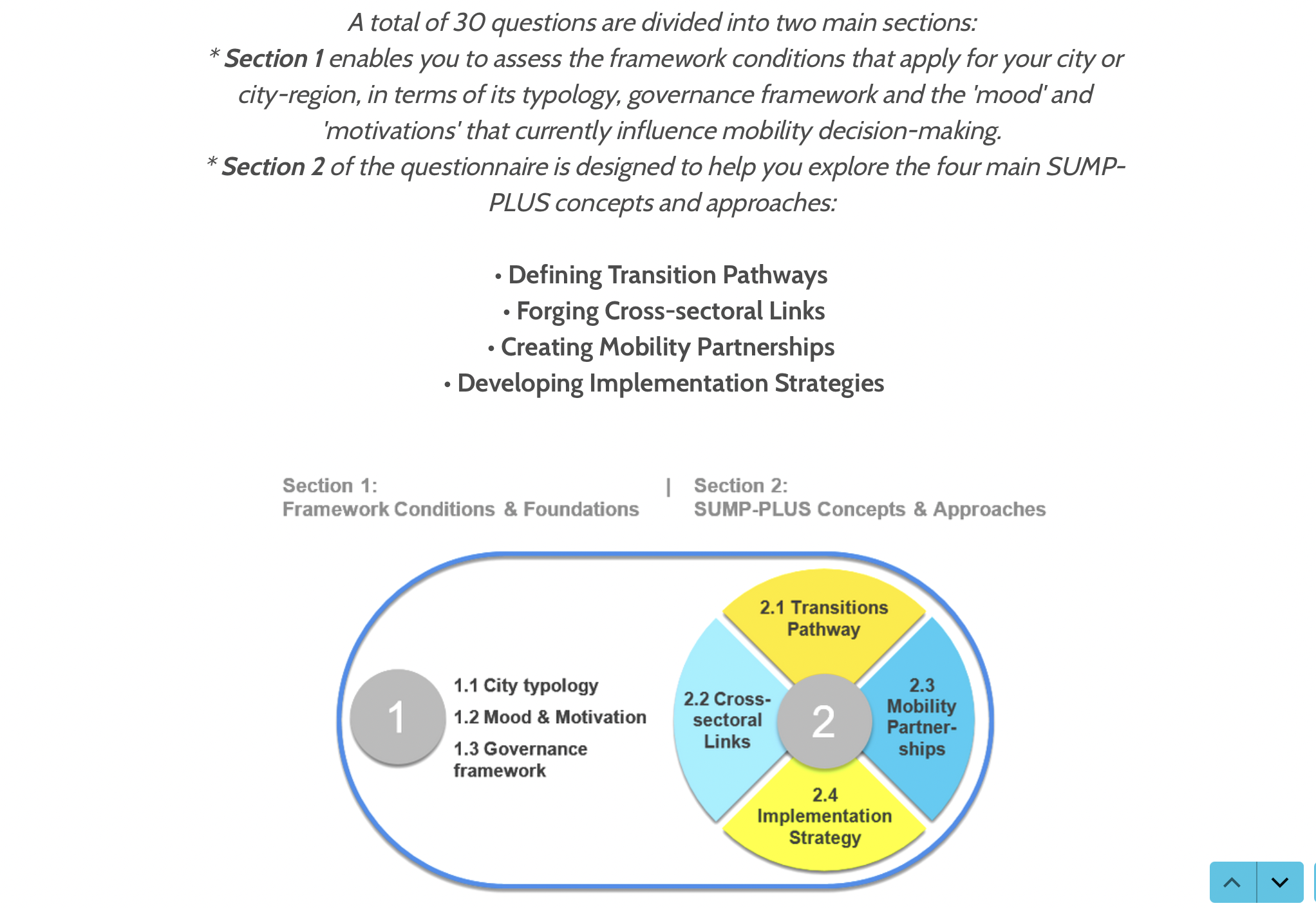Topic outline
SELF-ASSESSMENT GOVERNANCE TOOL

The Self-Assessment Governance Tool to Support Mobility Transitions has been designed with the objective to give cities an opportunity to examine how existing governance arrangements and policy capacities may be a barrier when it comes to transition to a sustainable mobility system. In addition, it seeks to help cities better understand the disconnect that may exist between policy goals and achievements, identify triggers and drivers of change, and assess what resources are available during the different stages of the process.
The tool is divided into three parts:
1. A assessment concerning what motivates cities to shift towards sustainable urban mobility planning;
2. An assessment of a city’s governance arrangements and policy capacities with regard to their transition pathway; and
3. A measure of the level of progress according to three different scenarios.To access the self-assessment tool, click here.
For more information on how to fill in the self-assessment tool, please use the attached user guidelines.
More information about governance capacity building and requirements related to the governing of long-term policy process can be found under Sub-course 1b "Governance challenges for long-term transition planning," which is located under the course category "Supporting the Sustainable Urban Mobility Planning Process."
The questionnaire helps cities successively identify their baseline triggers and drivers, assess their level of governance autonomy, and understand the distribution of governance and policy. This explanatory note provides guidance to users. capacities to support the development and the implementation of sustainable mobility transitions.







